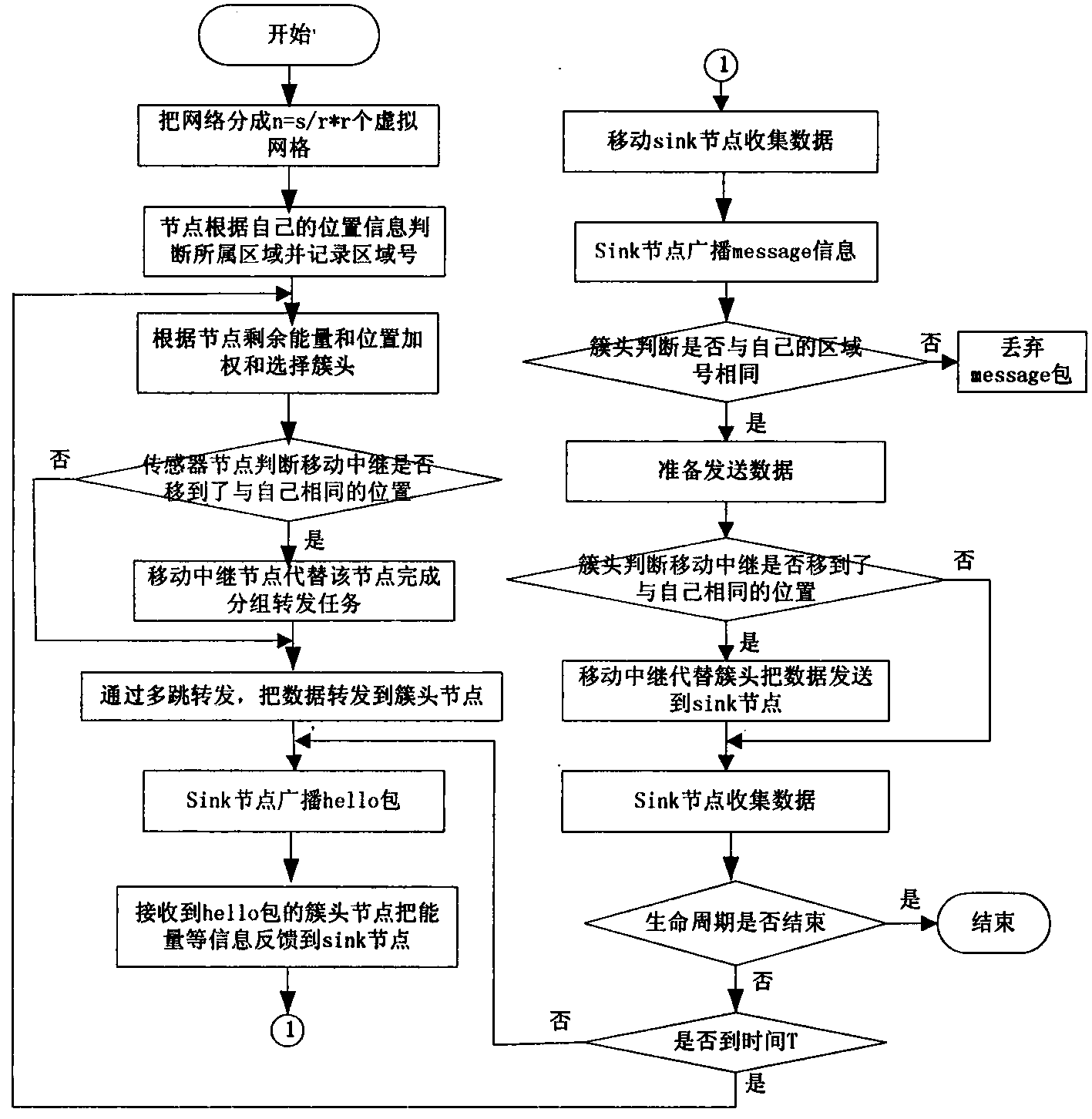Energy-efficient route of wireless sensor network
A wireless sensor and sensor node technology, applied in the field of energy-saving control routing algorithm, can solve problems such as large energy consumption, high network cost, and imbalance
- Summary
- Abstract
- Description
- Claims
- Application Information
AI Technical Summary
Problems solved by technology
Method used
Image
Examples
Embodiment Construction
[0035] In order to make the technical solutions and advantages of the present invention clearer, the implementation manners of the present invention will be further described below in conjunction with the accompanying drawings.
[0036] The present invention adopts NS2 emulation platform to implement the MEERP algorithm, and concrete process is as follows:
[0037] 1) First establish a Cartesian coordinate system in the monitoring area, and calculate the optimal number of clusters according to the radio model. The network is divided into corresponding number of cells, and the cells are numbered. Each cell is a cluster. Nodes judge which cluster they belong to based on their geographic location information.
[0038] 2) In each cluster, the cluster head is elected according to the weighted sum of the remaining energy of the node and the coordinate distance from the node to the center of gravity. The more current remaining energy, the closer the node to the coordinate position o...
PUM
 Login to View More
Login to View More Abstract
Description
Claims
Application Information
 Login to View More
Login to View More - R&D
- Intellectual Property
- Life Sciences
- Materials
- Tech Scout
- Unparalleled Data Quality
- Higher Quality Content
- 60% Fewer Hallucinations
Browse by: Latest US Patents, China's latest patents, Technical Efficacy Thesaurus, Application Domain, Technology Topic, Popular Technical Reports.
© 2025 PatSnap. All rights reserved.Legal|Privacy policy|Modern Slavery Act Transparency Statement|Sitemap|About US| Contact US: help@patsnap.com



